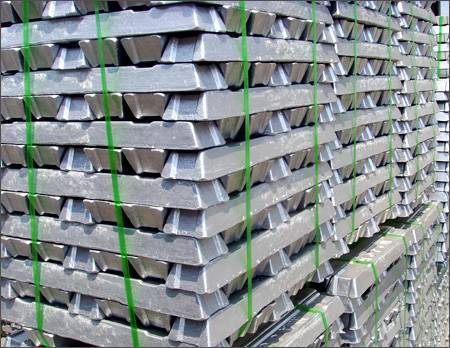Sustainability of "Aluminium recycling Vs. Primary production"
Team AL Circle
2024-04-19
Recently, you must have heard that aluminium recycling is gaining momentum. But why are people so interested in recycling aluminium? Before answering that question, here is a little trivia. You must have heard that 75% of the aluminium produced in the past is still in use. Aluminium can be recycled over and over again, and the metal will still retain its properties. So, is that why the stakeholders in the aluminium industry stress recycling aluminium? The short answer is yes. The longer answer is the looming environmental and sustainability crisis on the horizon.

Why recycling aluminium is better than producing primary aluminium?
Primary aluminium is made from alumina or aluminium oxide extracted from bauxite, whereas secondary aluminium is made by recycling existing aluminium and aluminium scrap. Although both are industrial processes and require elaborate setups, why is the latter more sustainable than the former? Here are five reasons to answer that question:
1. First and foremost, recycling aluminium uses only 5% of the energy required to produce primary aluminium. Less power consumption means lower operating costs. Moreover, it uses fewer resources, which helps conserve non-renewable energy sources like coal.
2. Next, primary aluminium production also requires a large volume of water, specifically 0.28 to 1.10 gallons per pound of alumina. In contrast, recycling aluminium consumes a lesser volume of water. Therefore, recycling aluminium gets more points when it comes to sustainability.
3. Recycling aluminium scraps, such as beverage cans, ensures they do not end up in landfills. Beverage cans can be completely recycled and used efficiently by other industries.
4. Primary aluminium production requires bauxite mining, a non-replenishable natural resource. Mining bauxite is a time-consuming, costly, and labour-intensive operation, which reduces its economic viability. However, recycling aluminium involves aluminium that is already in use. It does not need to use up limited natural resources.
5. Decarbonisation is one of the top goals of the aluminium industry. However, primary aluminium production emits high volumes of greenhouse gases and carbon dioxide—more than 90% of emissions associated with the industry link back to primary aluminium production. The head of recycling at Hydro Aluminium Metal believes that recycling post- consumer aluminium scrap can lead the industry to lower emissions. He also believes that implementing decarbonisation practices will enable the global aluminium industry to produce aluminium at an industry scale with zero carbon footprint by 2030.
Comparing these five points in the case of primary aluminium production and recycling aluminium, you can see a clear winner. Therefore, recycling aluminium is definitely more sustainable than producing primary aluminium. But what holds back the potential of recycled aluminium and its use across industries?
A step towards achieving purer recycled aluminium:
One of the key concerns about recycled aluminium is its level of purity. Secondary aluminium can contain impurities, which limits its usage in several industries. To combat this drawback and achieve high purity in secondary aluminium, the US Department of Energy has funded a private- public partnership project to develop a technology that can remove metal impurities from aluminium. The licensed technology has yet to be revealed. The research and development project 'Selective Recovery of Elements from Molten Aluminium Alloys' is striving to design new-age technologies that enhance the quality of recycled aluminium and increase its usage in the US market. Through this technology, the team of researchers wants to achieve recycled aluminium that is so pure that it can be used to make electric vehicles.
Aluminium is an infinitely recyclable metal that does not lose its properties after recycling. Producing secondary aluminium is also more beneficial environmentally and economically. Despite all the upsides, there remains room for improving the recycling process. If the global aluminium industry wishes to meet the increased demand for aluminium sustainably, recycling aluminium and its scrap is the best way to go. While aluminium recycling is the key to obtaining decarbonisation, the aluminium industry is also exploring alternative and renewable power sources, such as hydro, solar and nuclear power, to attain this goal. When both these concepts are paired successfully, the aluminium industry shall be able to become highly efficient and sustainable.
Categories
Raw Materials
Scrap
Consumables
Primary Aluminium
Secondary Aluminium
Equipment
Technology
Downstream Products
Finished Products
Utilities
Services
Others
Recent Blogs
Subscribe to newsletter
Connect with us












